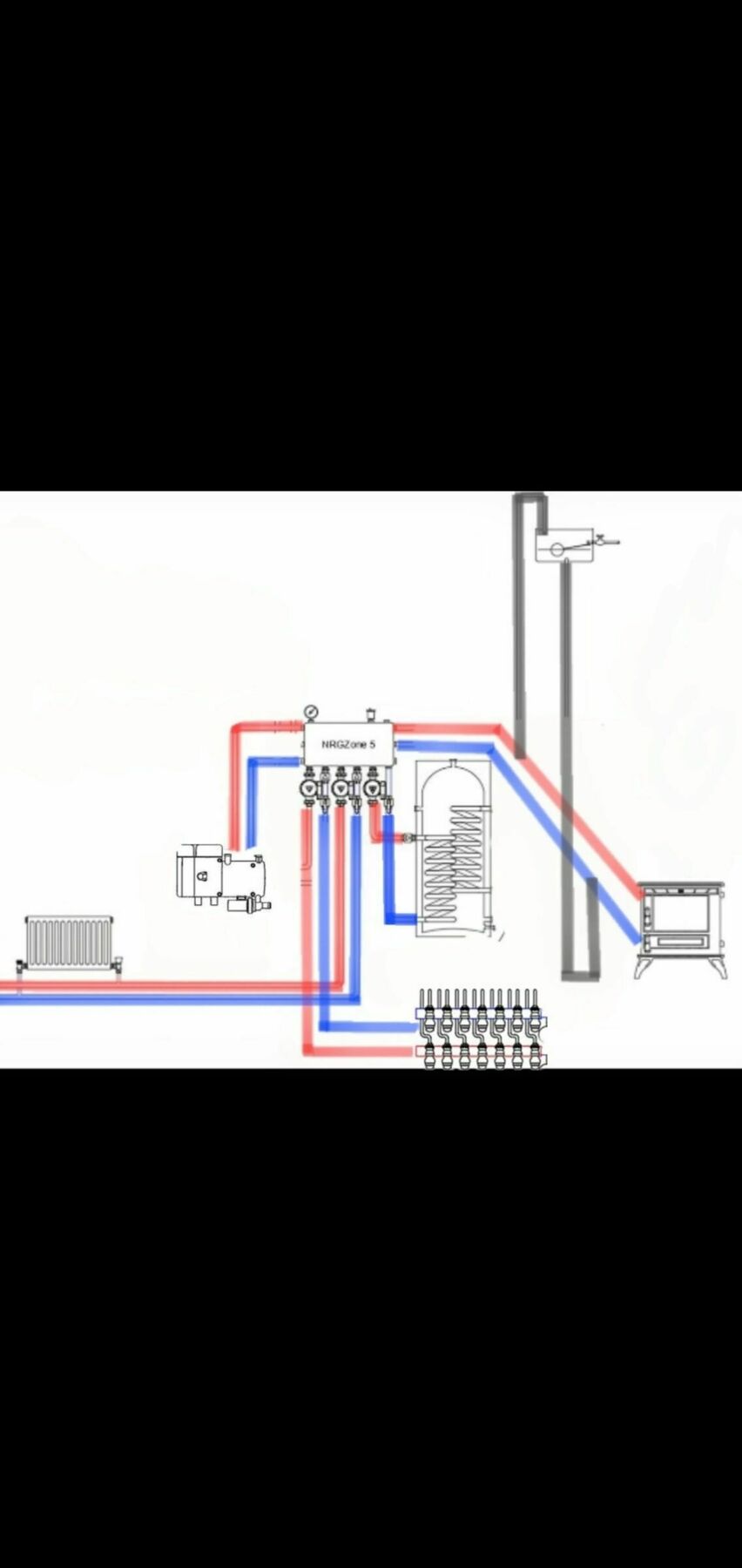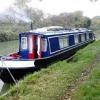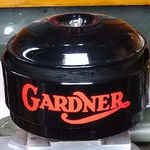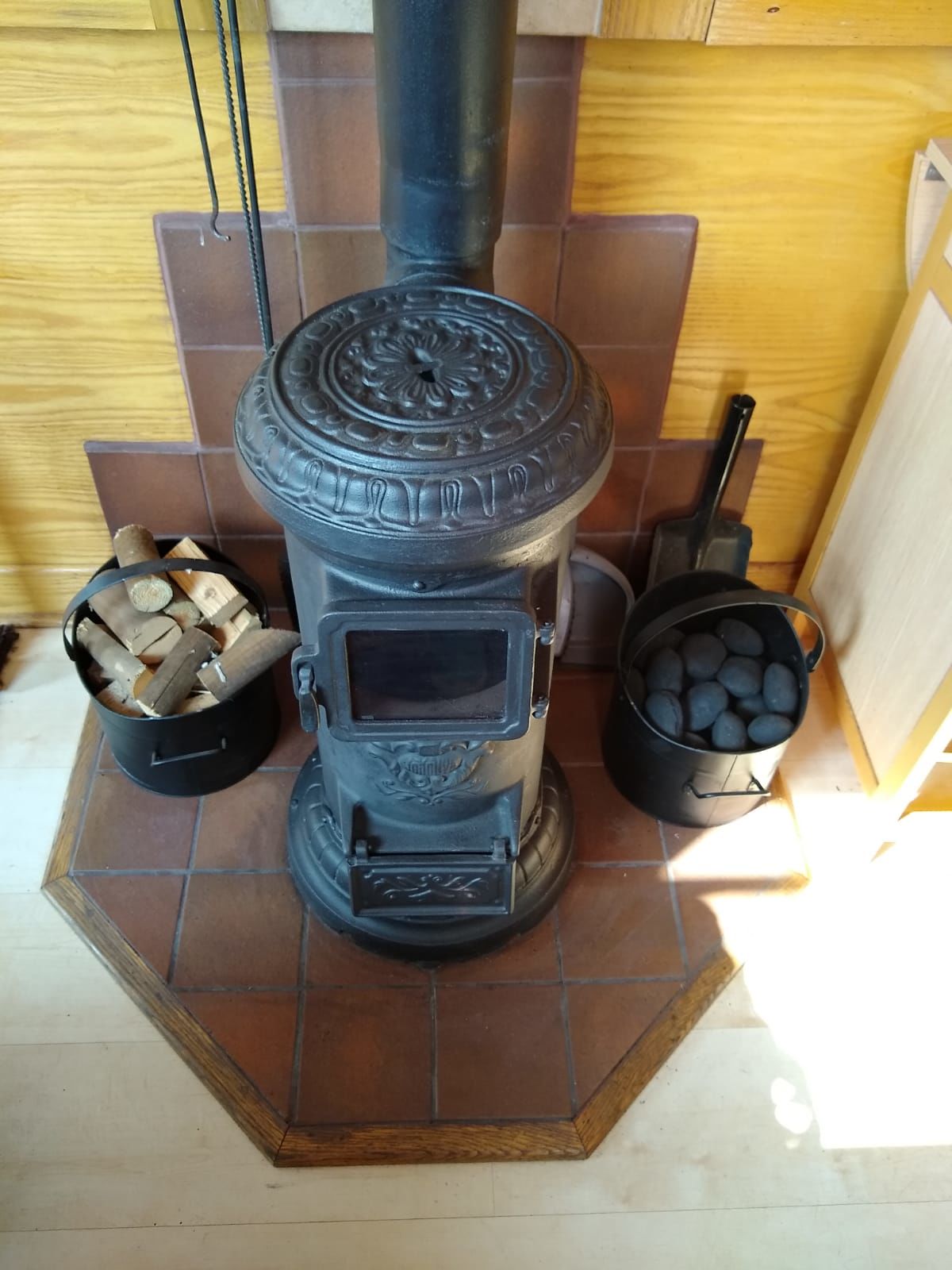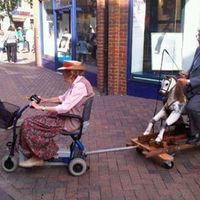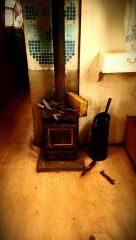Search the Community
Showing results for tags 'stove'.
-
Hello, My narrow boat has the stove flue feed through the sidewall. It draws fine. Has anyone else heard or had this design? I've only seen them on wide beams.
- 66 replies
-
- narrow
- canal boat
-
(and 3 more)
Tagged with:
-
Have just bought my first canal boat and will be taking up permanent residence in the New Year. What logs do people recommend for my wood burner? Ideally over the Winter months I would like to keep my boat warm using just the wood burner. ☺️
- 54 replies
-
- kiln dried
- woodburning stove
-
(and 2 more)
Tagged with:
-
Hi, here is all the information that I could find on this subject: Gravity fed systems for heating with a backboiler - the Intro section says enough that you can get a rough idea of what you must do (Added on the 18/09/2015) - Key principles is enough to get you started - and in Design there is more information for geeks who like to understand it all, or for people who need to debug I am designing a simple system which does not include a calorifier, so I have not included any information on this subject in this Summary. If you would like to add it, let me know and I will let you modify the text. There are still some questions that have not been answered. I have copied all of them here, below. If you have a short and clear answer to any of these questions, please post it here and I will add it to this summary. I might start discussion threads for some of these questions, if it turns out that the answer is complex and needs further discussion, or if no-one answers the question in the next few days. Important questions: Slope: - Why is the return pipe often straight-ish? Is the slope on the top pipe more important than the slope on the return? If yes, why? Pipes: - do you anneal copper pipes yourself, or do you buy them annealed? - could I use plastic hose to connect both the top pipe and return pipe to the radiators? That would save a lot of copper pipe bending. What would be the drawback, apart from appearance? The hose would have to tolerate boiling water temperature, too... Header tank: - is it a good/bad idea to have the top of the header tank outside of the boat? Radiators: - how can I know whether a radiator has a suitable bore, or whether it will cause too much friction? Coolant: - can you use tap water, or should you use distilled water? Why? Fiiling ratio: - how much water / coolant do you put in your system? (read the relevant part of the document, for more info) Geek questions: Thermostat: - is a thermostat only useful if you have a pump, or also for gravity-fed systems? (to prevent the water from flowing below 30C, for example) And where would you put it? On the return, on the top pipe, or on both? Pump: Apparently a centrifugal central heating pump would allow water to circulate via gravity when it's not running. Is that true? How would you choose such a pump? (how much power, etc) Anti-freeze: - Why do you need to premix anti-freeze and water before? (what difference does it make?) - How much anti-freeze do you put, with water? 50%? But Anti-freeze does not flow as well as water, and does not transfer heat as well, so less anti-freeze might be better? Is 30% alright in the winter? Pipe size: - Why do people recommend a 22mm pipe to the header tank, instead of a 28mm pipe which would make it easier for hot water to escape? - Is it better to have 28 to 15mm adapters on the rads, or to have 15mm pipes Tee-ing to the rads? The second options enables to have a tighter bend, which causes friction, but enables the radiators to be higher. Misc: - SmileyPete said this in an old post, and I don't understand the word "lagged" in this context, any idea? Here is the text: "a good way of doing it is to have an adequately sized gravity 'heat dump' rad(s) near or next to the stove, then more distant rads and/or calorifier on a pumped circuit connected by 15mm pipes, ideally lagged. That way the gravity rads can be shut off and all the heat directed to the furthest rad." ------------ I wrote this by reading, organizing and summing up all of the relevant information discussions threads that are mentioned in the Index of common topics on this forum, plus a few other sources of information on internet.
- 29 replies
-
- 1
-

-
- gravity
- backboiler
-
(and 2 more)
Tagged with:
-
Hi all 👋, first post on here but probably one of many, I'm currently looking into the heating system I am going to install on my widebeam i was hoping you could take a look and tell me what you think and if it all looks ok. (Heating sorce: Solid fuel fire and diesel water heater Heating up - radiators, under floor heating and hot water) I am thinking of installing the bubble b1c1 corner stove with back boiler, also what are peoples thoughts on the Prity AM 12 ( https://fireplacesforhome.com/Wood-Burning-Stove-Corner-Model-Fireplace-Log-Burner-Solid-Fuel-Prity-AM-12kw ) multifuel stove? And also a webasto diesel water heater. All my heating appliances are going to run to the NRG zone 5 manifold wich does allow thermosyphon , I plan to have 4x radiators, underfloor heating and calorifier attached. The diagram is missing the PRV and the pipes from the back boiler to the heating manifold will be in 28mm. My biggest worry is the thermosyphon safety as it is going to run to the heating manifold so i dont have any heat leak. Any input would be appreciated. Kind regards Brad I've linked the NRG zone let me know what you think to using this as I can't see any post speaking about this or any manifold. https://www.nrgawareness.com/product/nrg-zone-4-5-6-32-32-28/
- 8 replies
-
- back boiler
- multifuel
-
(and 25 more)
Tagged with:
- back boiler
- multifuel
- stove
- nrg zone
- thermosyphon
- gravity feed
- gravity circulation
- hot water system
- radiators
- fire
- fire safety
- widebeam
- narrowboat
- diagram
- dhw
- calorifer
- heating
- underfloor
- underfloor heating
- header tank
- hot water heating
- hot water manifold
- gravity
- pressure relief valve
- prf
- stove boiler
- hot water savings
-
Can anyone recommend someone who can measure up and manufacture a single skin 4 inch flue, either black painted steel or stainless? Reasonable radius from Autherley junction at the bottom of the Shroppie preferred so they can get to me to measure up, otherwise somewhere there's water in the cut if I need to go to them! Thanks in advance.
-
Hi all, I was hoping somebody could answer my question regarding flue pipe. I 've had a search on google to find an answer to this question but have not seen anything specific enough to put my mind at rest. I am in the process of finalising a boat that I bought at the start of summer, I have built a hearth and fireproof tiled backpanel to safety spec to ensure I won't go up in flames, however I fear I may have been hasty in buying the flue pipe for the inside of the boat. The pipe I have purchased is vitreous single skinned enameled pipe (to the correct 4inch diameter for my acorn stove) but it is incredibly thin compared to other flue pipes i have seen. I know it is important to fit a double skinned chimney but wondered if the vitreous pipe is fine for the internal cabin (I know this may or may not technically pass the safety for a new installation but my main concern is will it be safe? I have noticed that some of the joints also have two holes drilled in and wondered apart from using fire cement whether there are any joint pieces that I may need to fit? I do want to try and make this installation as safe as possible but as you can see still have the odd concern, any help will be much appreciated, thanks, Pete :-)
-
Hi all, my stove looks like this at the moment: http://imgur.com/a/oZk6q The flue needs to be replaced, and it also needs a new bit to connect the flue with the stove. What is that called? A flue collar? I'm talking about the thing in the photo that's split in two halves. Does anyone know if and where I could source this online? Are they all different for different stove brands? Thanks a lot for any hints!
-
Hi peeps! I'm hatching a plan to expand our current Squirrel-fed radiator system to also heat the calorifer. I have about zero plumbing knowledge... so the ideas below are all based on assumptions. I hope that by showing you the idea at this stage, I might not make hideous mistakes! I intend to use the newer 'push fit' pipes and fittings, as they're easier, not that much more expensive than copper, and the links to the calorifier already use them. I'd also like to have a solar collector as an option. As far as I can tell, the calorifier only has one coil (unless the other one is hidden beneath its insulation.) The drawing shows the boat as if it were just one continuous wall. I.e., port, stern, and starboard. This is because the calorifier is on the port side, and the burner/radiators are on the starboard side. I have to find a way to get the feed and return either around the back of the engine bay, or along the bulkhead dividing the bay and the living space, but beneath the doorway. The circles with crosses are taps - or three-way selectors, which I'm assuming exist. The bulkhead appears twice (port and starboard) The existing system has a bolan pump, but can also be used as a thermosyphoning system. I've sent the hot feed around the back of the boat, thinking that this might continue to operate (even though the cold return from the calorifier must travel uphill by about 100mm to rejoin the radiator system. An issue with this solution is that the pipe may loose too much heat to the hull / uninsulated engine bay. Another is: how do you mount pipes onto steel hulls! If thermosyphoning, or just running from one pump isn't an option, it might be more sensible to run the hot and cold feeds from the radiator system to the calorifier along the same route that the cold feed takes in this design- along the bulkhead (3d sketch might make more sense....) I suppose that's my main question at the moment. Is is a feasible idea? and, if so, should I run the pipes around the back of the boat (pictured), in a more gentle slope, or just go for the steep attack, use less pipe, but need a pump? The hot feed could be teed from the pipework just below the header tank instead. But would the single bolan (?) pump by the Squirrel be able to move the water that far? Assumptions. The original hot/cold pipes from the engine only have one shut off valve. It's my understanding that the pressure of the water in a circuit will prevent water from a different circuit from entering it when the tap is closed: water always follows the path of least resistance. For the solar circuit, there is a pump out there that will run on 12v, not consume insane amounts of power (though, on sunny days, our panel produces at least 8A), and be able to push the cold feed water to the roof. I require a separate header tank for the solar circuit, as it's higher than the current one. The solar circuit needs to be treated as a separate system, as if connected, pressure will release water from the lower header tank. Any help or suggestions on how this could be made better, or if it will even work, most appreciated!
- 12 replies
-
- hot water system
- solar
-
(and 2 more)
Tagged with:
-
Hi All. I am replacing my wonky Kabola Old English(Diesel) with a Boatman multi fuel stove (with a back boiler) and am not sure how mad to go with the hearth, insulation etc. Bearing in mind that the Kabola heat output is rated at 4kw and so is the Boatman I would have thought it a fairly straightforward swap out........! The Kabola was fitted on a quarry tiled hearth with ply under it (as i discovered upon removal), also the flue is single skinned and pases within a couple of mm of the roof ply (where the hole was cut). Also a wooden wall is only a couple of inches away from the flue hole and old flue. This is clearly unacceptable! The fire surround is about 4" from the rear corners of the new stove (it was slightly closer with the old stove). The fire surround walls seem to be 6mm fireboard on ply, tiled with small thickish tiles. I have been reluctent to destroy it to find out. As there has been no problems with the old stove catching fire to the boat and the dimensions of the Boatman being smaller (and with the back boiler, unlike the Kabola which had its water pipes in the top), I thought would add 2 or 3 layers of 9mm fireboard onto the ply base/hearth, possibly with an airgap. Fit a double skin flue through the roof, with the outer skin 50mm from combustables as recomended and angled towards the stove joining a single skin flue at an acceptable distance from the wall. I was hoping to leave the surround alone. I think the Kabola was installed back in 99 when the boat was built as the woodwork around is quite proffesionally done. Question- would leaving the old surround as is be bordering on insanity, or as it has been ok with the kabola so far would it be ok! Any other comments/advice would be gratefully recieved. If my woodworking skills and time were up to it I would be tempted to start over. Thanks
-
The "Stoves in Boats" guide is full of all kinds of useful numerical suggestions about dimensions for stove and hearth fitting, but baulks at the lip of the heart, suggesting a hearth should have a What does this mean? 5cm? 10cm? 15? Why don't the recommend a dimension? What size is yours? What would you recommend?
-
I have just bought a canal boat that sleeps 7, but the previous stove has been ripped out and so I am in need for a replacement. I'll be using my new boat to travel around Ireland's waterways this winter and so will need a stove that's cheap to run but also effective. Any help will be much appreciated. Thanks to all.
-
Hello helpful folks, In preparation for the winter months ahead could someone advise the following? A small 12v pump to push the hot water from the stove along the 3 radiaters attached to the back boiler? It was responsive to a thermal dial that activated the pumo when it reached certain pre set temps. I think the one we had was quite old but is small and cylinderical. Any thoughts anyone on where I could one similar? Thanks
- 1 reply
-
- 12v water pump
- stove
-
(and 2 more)
Tagged with:
-
Could someone help please, my outside of the stove has cracked is it possible to repair it or its it a case of getting a new one from machine mart?
-
I've read quite a lot of threads and seen a lot of pictures online of people's stove installations. I know this is a topic that's been discussed at length, but I remain puzzled about what's going on when it comes to the BSS. I sought advice from a surveyor who just said "dunno, I'd have to see it" - not a response that filled me with confidence or that was in fact helpful when I'm trying to design something with dimensions that I can be confident will pass an inspection. Some stove suppliers publish advice such as this (PDF) and this (PDF), which purports to be based on official regulations but is, as far as I can tell, advisory unless the boat is a new build. The essential recommendation is that there should be 225mm of hearth in front, 150mm to any unprotected side, fireproof panels made of 25mm CaSi board (I suppose vermiculite would work as well) protecting any combustible materials, a gap of 45mm between stove and panels and, for a single-walled flue, at least three times the flue's diameter to any combustible material. This implies a 650mm square hearth (approximately) with 35mm panels (if tiled) plus 10mm air gaps and something that goes all the way up the wall to the roof. On a boat that's only 6ft-something wide inside, that's a lot of space. Needless to say, very few of the pictures I've seen of people's actual installations are anything like this. Typically a stove is crammed into the corner next to steps (let's not open the box of whether that's a good place or not), with a hearth of maybe 50-100mm in front and a few tiles behind it, with no apparent fireproof protection either behind the flue or even sometimes between the stove and a wood-panelled wall or frighteningly adjacent curtain. A bloke I met at Ellesmere last year said "they just look for scorch marks and if there aren't any, you're fine". No wonder there are boat fires. You don't hear a continuous flow of stories about people failing their BSS the first time after fitting their new stove, so it appears the surveyors indeed aren't fussed about the recommendations and essentially do "just look for scorch marks". I want a safe installation of what is genuinely a hazardous piece of equipment, but I don't want to take up unnecessary space and I don't want to be the only fool who actually follows the recommendations to the letter (or rather, number) when no one else is bothered. Anyone care to spell out how it actually works?
-
Hi all, I am very, very new to the world of narrowboats. Hopefully getting my boat within two or three weeks. I am posting on the forum because I am unable to identify the make and model of the multi-fuel stove on my boat-to-be. The boat's specification booklet says it's called an Olivia and was supplied by Northern Fabrications. I emailed Northern Fabrications asking about this stove. They emailed back and Eddie said that he's never heard of it. I cannot find a stove called Olivia on the Internet, so far - or it's going to take a much thorough search. I have also looked at hundred of images of stoves in the hope of seeing another like it. Please see the attached photo and hopefully someone may recognise it. Thank you in advance Unix
-

Stove chimney extension corroded on to collar
Chribley posted a topic in Boat Building & Maintenance
I've bought a 50' replica Thames stemhead barge about a month ago. The stove, a Morso Squirrel 1410, was working fine at first and the whole boat got really hot, but now it won't get more than warm, even with the ash pan air valve wide open. In fact, even with the ash pan door open it doesn't really heat up like it did before. I think the flue needs investigation for blockages and cleaning, but I can't get the stainless steel extension off the collar on the roof. It's a custom made extension and I think should just lift off, but something - corrosion? tar? - has glued it solid. I tried tapping it with a hammer round the base but only managed to make some dents in the otherwise smooth and shiny steel! My next thought was to heat it up vigorously with a blowlamp round the base, but before I do I'd appreciate any thoughts that might save me from doing any more damage. -
From the album: Petes
Heating layout for boats combining gravity and pumped radiators plus a gas or diesel heater.-
- Boat
- backboiler
-
(and 2 more)
Tagged with:
-
From the album: Petes
Basis for an open vent heating system for a boat fed by a backboiler. Uses adequately sized gravity 'heat dump' rads nearby or next to the stove, and more distant rads and calorifier on a pumped circuit.© smileypete :-)
-
- Heating
- backboiler
-
(and 2 more)
Tagged with:
-
From the album: Boit
-
We're looking for a stove for New Boat. There are about a hundred million stoves out there. How on earth do you choose one? I want to burn wood and smokeless. This is to heat a cabin about 11 x 25ft. As I'm buying a lot of equipment for the fit-out I'm hesitant to drop upwards of £700 on a stove when a £300 one will do. That said, the design and quality of a stove is important and I will pay what I have to pay for a good machine. I'm quite taken with this design. It's a "Lapland 4kw Multi Fuel / Wood and Coal Burning Stove" http://www.greymetal.co.uk/multi-fuel-stoves/lappi-4kw-multi-fuel-wood-burning-stove-grey-soapstone.html Any recommendations one way or the other?
-
Hi all We are new to Canal World,and are currently at the planning stage of having a narrowbeam built.We would be very interested in comments from people who have experiance of the Heritage Compact cooker/heater.If possible some photos of your insatlations would be usefull too. Many Thanks Carl and Samantha
-
hi all can we use one of these on our NB safely? http://www.gooutdoors.co.uk/mini-heater-hose-and-reg-p162735 we have a problem with the back of the boat never warming up, even when our stove makes most of the boat pretty toasty. we're thinking of getting some existing and currently redundant rads joined up to a combi boiler or webasto/eberspacher, but want something to keep the chill off our bedroom and bathroom in the meantime for short periods of time (maybe an hour in the morning and an hour in the evening). if something like this is no good could someone suggest an alternative?? cheers! mike
-
I'm looking to replace my stove, and have found one with the perfect heat output to room / boiler, but it has a 6" flue outlet. (We're heating a 63'x 12' widebeam with 3 radiators)Currently we have a 5" collar through the roof. Can I use a reducer between the stove and flue? There don't seem to be many chandlers offering collars with a 6" internal dimension, is there a reason for this? thanks.
-
Hello Everyone! I have a Morso Squirrel multi-fuel stove installed on my narrowboat. The chimney is attached to the stove top plate as opposed to the back plate. There is some light rust on the collar where the chimney meets the top plate and when I last lit the fire some smoke started leaking from around the collar joint. Does anyone have a recommendation about what to use to seal around the collar? I tried some stove cement but that cracked and flaked off as soon as the stove heated up… Thanks - Davo
-
Hi there, We have an Esse Montrose stove on our widebeam at the moment but as it won't stay lit overnight really need another. Unless theres a problem with the stove? The Flue is clear, not really sure what else would affect its staying power.. Anyway we think we need a bigger stove anyway and want a back bolier for 2-3 radiators. We have quite a few big windows. Was wondering what advice anyone might have on the subject. Thinking a Squirrel would be too small but I've read that other widebeams have them and its fine. Our boat interior length is about 56' (its a 68' with cruiser stern). Would be great to get a stove that's at the cheaper end of the scale but dont want to risk the same problem of it not staying in overnight. Thanks for reading


